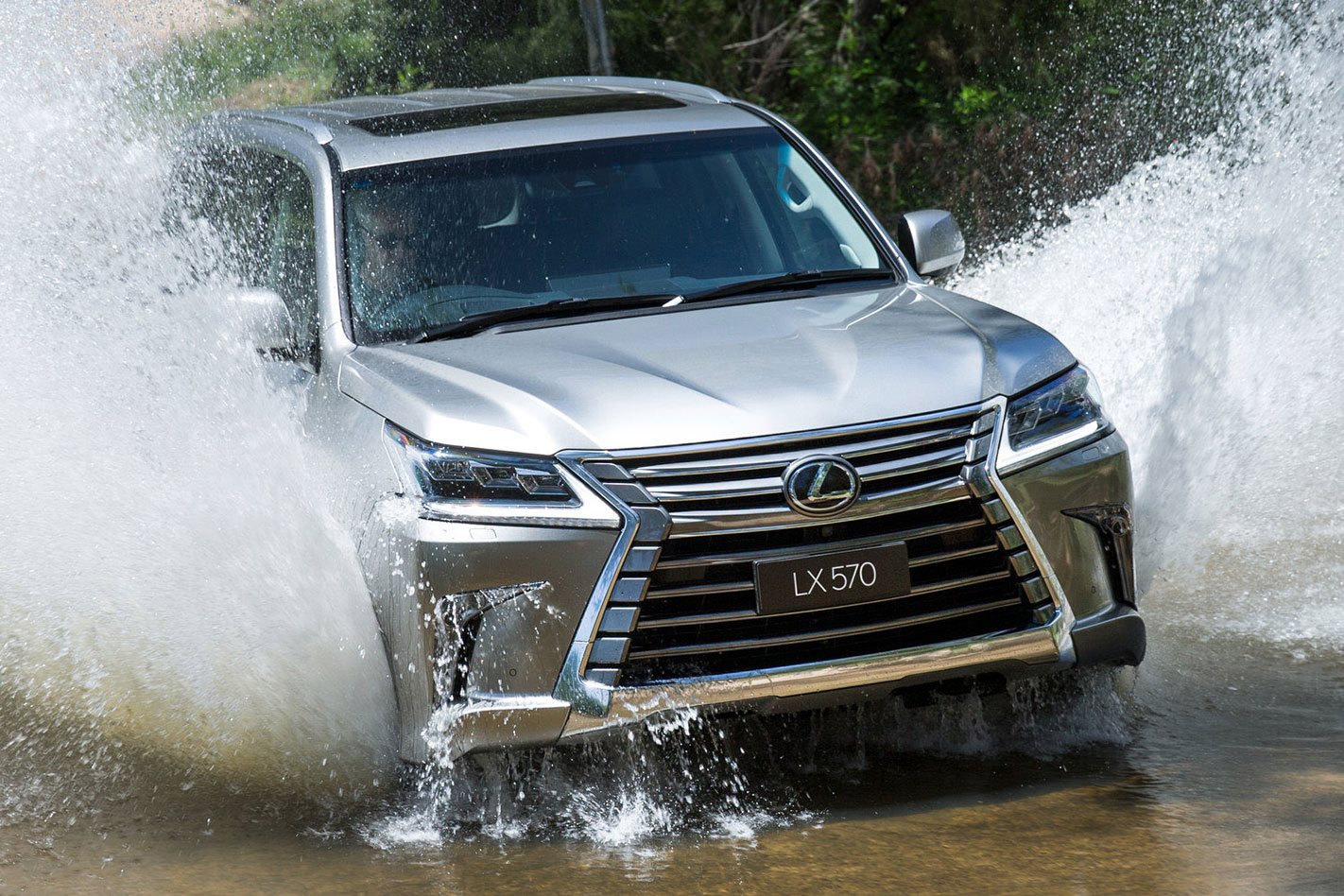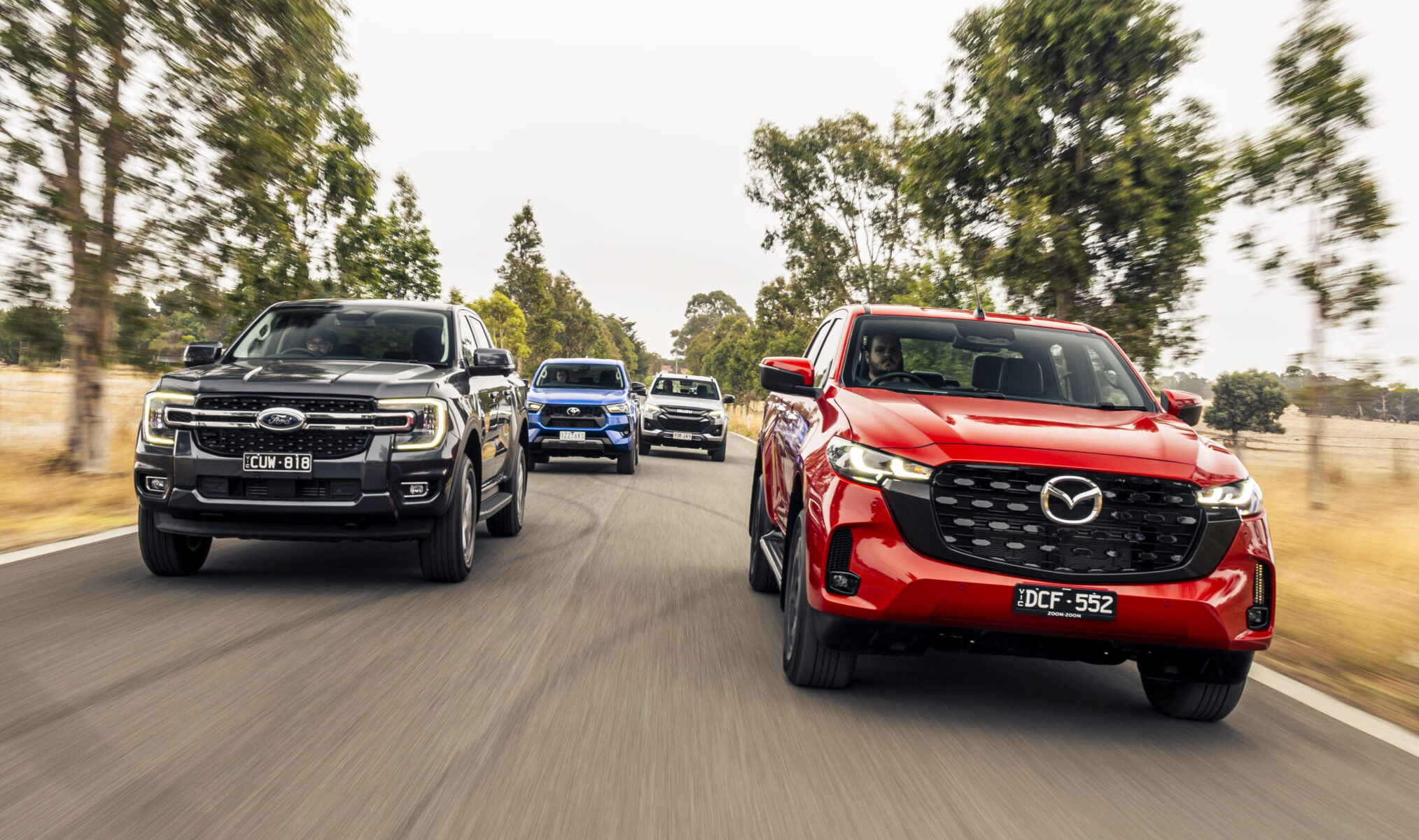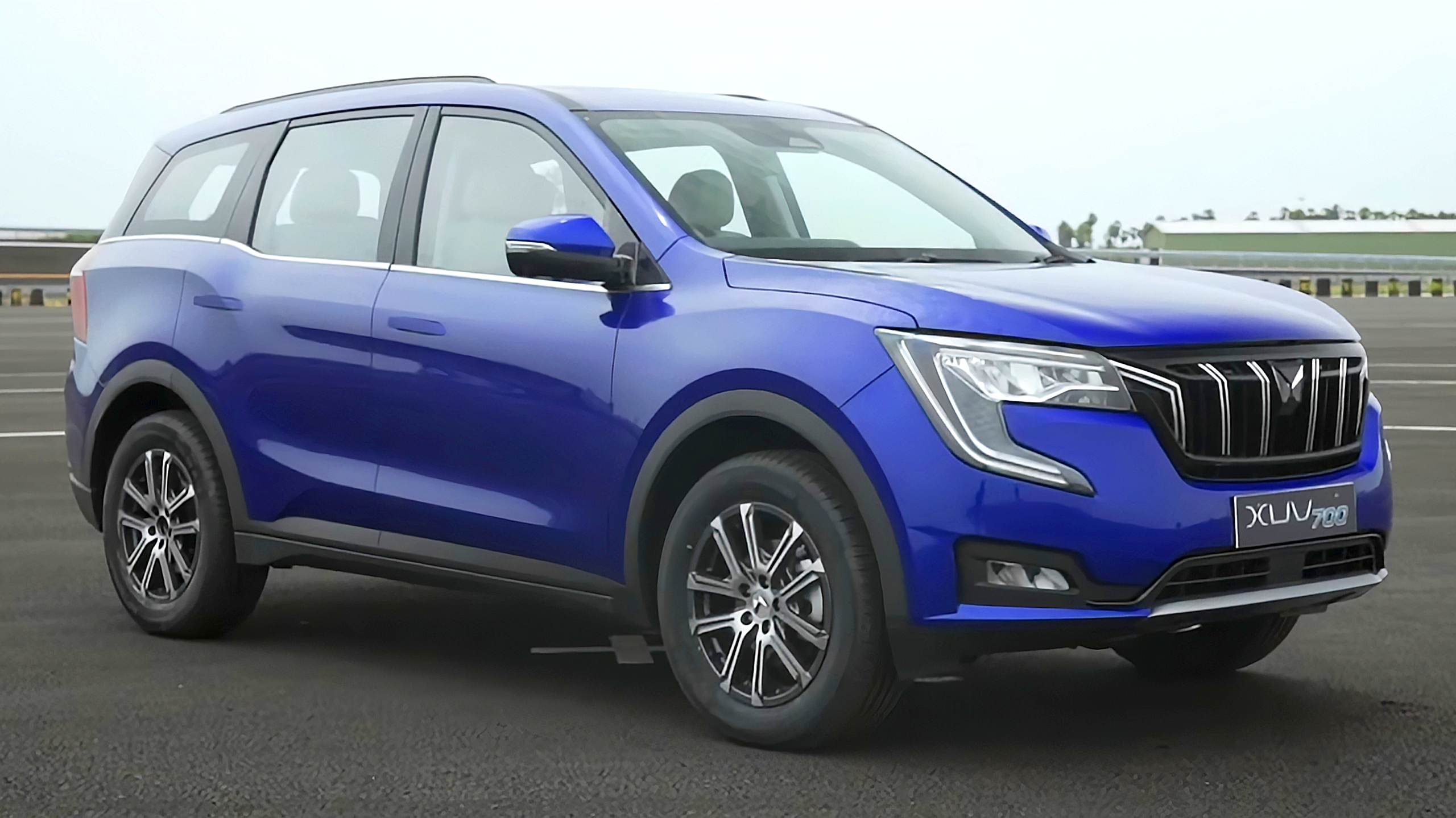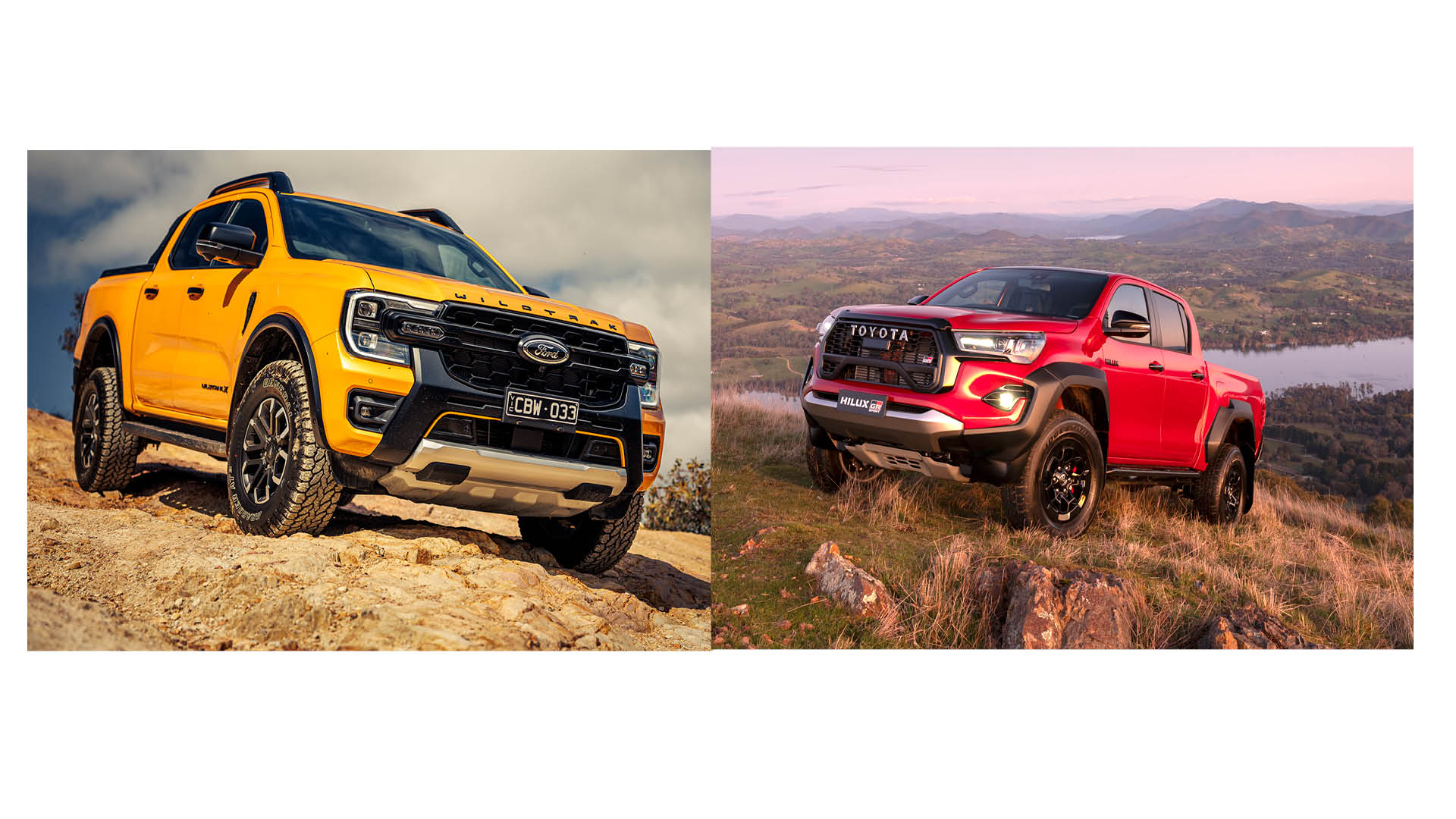
Score breakdown
Things we like
- Limousine luxury in a tough and capable 4WD
Not so much
- High purchase price
- Petrol V8's heavy fuel use
What stands out?
The Lexus LX is a very comfortable, smooth and quiet luxury 4WD wagon that is also highly capable when driven off road. Lexus is Toyota’s premium brand, and the LX shares its body structure robust 4WD chassis and turbocharged diesel engine with the Toyota LandCruiser. There are however many differences, beginning with the LX570’s bigger and more powerful petrol engine – a petrol V8 – and its eight-speed automatic gearbox. The LX570 also seats eight people.
What might bug me?
No eight seat option with the diesel LX 450dHow much money you find yourself spending on petrol. The LX 570 uses a lot of it, and it is especially thirsty in stop-start city driving. Lexus also recommends you run on premium petrol, which is more expensive than regular. (Although the LX570 will run satisfactorily on regular if necessary.)Messing about with the fiddly touchscreen controller that can make selecting functions difficult, particularly while driving.That friends who spent less and got the similar Toyota LandCruiser 200 can point to several reasons why their car is better. However, it won’t be a one-sided argument: the Lexus too has its strong points.Looking for parking spots big enough to accept your LX. It needs lots of room.
What body styles are there?
The Lexus LX large five-door SUV-style wagon is the only body style. The LX 570 has seating for eight in three rows, while the LX 450d has standard two-row seating for five.The LX drives all four wheels all of the time. You can also engage low-range gearing via a button on the centre console, which makes it easier for you to drive very slowly off-road.The Lexus LX is classified as an upper-large SUV, higher priced.
What features do all LX versions have?
A proximity key, which lets you unlock the car and drive away without removing the key from your pocket or bag. To start the engine, you push a button. Sidesteps, to help you get in and out of the car.Satellite navigation, displayed on a 12.3-inch touchscreen. A 19-speaker audio system with USB and iPod ports, and Bluetooth connectivity for music streaming and phone calls. Wireless charging for compatible mobile phones.Controls on the steering wheel for the sound system and your phone. Power-adjustment of the steering wheel for tilt and reach.A head-up display that projects your speed and navigation prompts onto the windscreen, so that you can see it easily without taking your eyes from the road.A rear-view camera, and front and rear parking sensors. Additional external cameras that allow you to select different views from around the car.Bright and long-lived LED headlights that come on automatically when it gets dark, and that dip automatically for oncoming traffic. Windscreen wipers that operate automatically when it rains.A leather-trimmed interior, with three rows of seats. Heating and power adjustment for both front seats. A memory for your adjustments to the driving position (steering wheel, external mirrors and 10-way adjustable seat), so that you can restore settings quickly after a companion has driven the car.Powered fore-and-aft adjustment for the second-row seat, and powered deployment and stowage for the third-row seats. Powered opening and closing of the two-piece tailgate.Four-zone climate control, so that the driver, front-seat passenger and two rear passengers can each set their desired cabin temperatures. A refrigerated coolbox in the centre console.Two 11.6-inch DVD screens behind the front seats, and three sets of wireless headphones, so that rear-seat passengers can watch movies or play games. A sunroof.Active (radar) cruise control, which will follow a vehicle in front at a pre-set distance, braking automatically if necessary. When the road ahead is clear, the LX will restore the cruise speed you have chosen.A range of driving modes, which lets you adjust in concert how directly the car responds to the accelerator, how weighty the steering feels, and how comfortably the car rides. Eco mode will even tailor the air-conditioning for maximum fuel economy.Adaptive suspension that optimises the ride automatically – and almost instantly – for smooth or rough roads, and that lowers the car at highway speeds to reduce body roll when cornering. You can also lower the car further when it is stationary, to make it easier for passengers to get in and out. And when you are driving off road, you can raise the car for more ground clearance.Electronic traction control, which helps the car go further in difficult off-road conditions. Crawl Control, for negotiating very difficult off-road terrain. (This controls the accelerator and brakes automatically to maintain a speed you select; all you have to do is steer. You use this in conjunction with the low-range gearing.)Settings for different off-road conditions that optimise the stability and traction control (also used in conjunction with the low-range gearing).Shiny alloy wheels, and a full-size spare wheel. A system that warns you if a tyre is losing air pressure.Ten airbags, and electronic stability control. (For the placement of airbags, and more on the LX570’s safety systems, please open the Safety section below.)The LX570 comes with a four year, 100,000km warranty.
Which engine uses least fuel, and why wouldn’t I choose it?
The 4.5-litre V8 turbo-diesel in the LX 450d is the more economical of the two engines on offer. In the official test it uses 9.5 litres/100km (city and country combined).This is the same diesel engine as in the Toyota LandCruiser 200 and shares the same six-speed automatic transmission. It was added to the LX range in March 2018 to provide an economical alternative to the LX 570’s big 5.7-litre petrol V8, which uses 14.4 litres/100km in the official government combined-cycle test, and generally more in the real world.The difference in fuel economy means the diesel has an average driving range of 978km, which is 20km more than the V8 petrol despite its 93-litre fuel capacity being 45-litres less than the V8 petrol’s twin-tank set up.Reasons why you would not buy the diesel engine include the fact the V8 is coupled with an eight-speed automatic gearbox which helps it to run extremely smooth and quiet, and provides effortless performance. And, if you need to carry more people, the diesel is only available with five-seats.
What key features do I get if I spend more?
The LX 450d is the cheaper of the two LX versions and comes with five seats and a less advanced six-speed automatic transmission.Spending more on the V8 petrol LX 570 brings a third row for a total of eight seats, and an eight speed transmissionAbout the only other thing you can spend more on is an Enhancement Pack that swaps the standard 20-inch wheels for sportier looking 21-inch wheels and lower-profile tyres. It also adds ventilation and cooling for the front seats, heating and cooling for second-row outer seats, and heating for the steering wheel.
Does any upgrade have a down side?
The significantly extra fuel consumption of the LX 570’s V8 petrol engine.The tyres on the Enhancement Pack’s 21-inch wheels are less suitable for off-road driving than the tyres on the standard 20-inch wheels. They are more susceptible to off-road damage, and don’t ride as smoothly on rough roads.Black is the only colour that doesn’t attract an additional cost. All other colours, including white, cost more.
How comfortable is the LX?
The LX might be a high-riding 4WD vehicle, but you can make it easy for even small or not very agile people to climb on board by putting the suspension into Access mode – which lowers the car. The side-steps help here too. And with its smart-key entry, it even unlocks automatically when you touch the door handle.Inside the LX’ spacious cabin you’ll find a world of comfort and opulence. Everything is beautifully finished and detailed. The dash is dominated by a huge, 12.3-inch tablet-style touchscreen, from which you can control the many ancillary functions. That means control buttons don’t crowd the dashboard.The LX 570 may have a big V8 under the bonnet but you’d hardy know, as it does its job in a very subdued, quiet and refined manner – all the while providing ample response and effortless progress.The LX 450d also has a very smooth ride and is much quieter than expected to the point where the engine sounds rather underwhelming when you accelerate.Both versions keep out road noise, and the suspension soaks up bumps beautifully.Life inside the LX is so very serene, unless of course you want to crank up the brilliant premium audio system.
What about safety?
Safety is a strong point of the LX. It brings you a big airbag count, fatigue-reducing automated functions such as headlamp dipping, and a comprehensive active safety suite that includes autonomous braking.There are 10 airbags: front and knee airbags for the driver and front passenger; side airbags for the driver, front passenger, and second-row outer passengers, to protect upper bodies; and full-length curtain airbags to protect the heads of outer passengers in all three rows of seats from side impacts.There is electronic stability control, which can help you bring a skidding car back under control. This is mandatory on all new cars.Automatic emergency braking operates as part of the LX’s radar-based Pre-Crash Safety System. If it detects the imminent prospect of a frontal crash, it will trigger an audio-visual warning and pre-tension the front seatbelts, and if you are not braking hard enough it will add brake pressure. If you are not braking at all, the system will brake for you automatically.The LX also warns you if you are about to let the car wander out of its lane (through distraction or fatigue), and of vehicles in blind spots to either side. And it has a rear cross-traffic alert, which warns you, when you are backing out of a parking spot, if cars are approaching from either side. This feature is particularly handy in country towns, which often have nose-to-kerb angle parking.The tyre-pressure monitor is another very useful safety item, and can help prevent an accident due to a flat tyre leading to a loss of vehicle control.The Australasian New Car Assessment Program (ANCAP) has not rated the Lexus LX, The Toyota LandCruiser 200, on which it’s based, has a five-star rating.
I like driving – will I enjoy this car?
The Lexus LX will astonish you with its comfort, silence and smoothness, which make it always an enjoyable car to drive.The LX 570’s big V8 petrol engine is totally unobtrusive unless you want it to be. Put your foot down and there’s a rush of effortless acceleration. It’s reserved but authoritative, and very much in keeping with the LX 570’s refined demeanour. It’s also stronger and a little smoother and quieter than the diesel.What the LX does less well is reward hard driving into and through corners, especially at high speeds and on bumpy roads. The automatic suspension systems do an excellent job of managing the car’s bulk, but there is only so much they can do for the handling because the LX has a truck-style chassis. It simply can’t provide the precision cornering and rough-road stability displayed by most other luxury 4WDs, whose chassis follow the patterns of those used on modern road cars.However, the truck-like chassis contributes to the LX’s formidable off-road capability. Off-road, an LX is at least as good as similar luxury 4WDs and generally much better. (It would be better again off road if it had higher profile tyres and smaller wheels, like the 18s fitted to the Toyota LandCruiser.)
How is life in the rear seats?
The Lexus LX has a very wide and comfortable second-row seat that will accommodate three adults without squeezing them up. The separate air-conditioning settings for either side of the second-row seat add to the comfort (as do the heating and ventilation for the outside seats supplied with the Enhancement Pack).The three third-row seats in the LX 570 are suitable for children and small adults. The powered fore-and-aft adjustment for the second-row seat is handy here, as you can tailor legroom in the second and third rows to suit passengers of different heights.Standard rear-seat entertainment systems give people in the back something to engage them on long trips, if they tire of the scenery.
How is it for carrying stuff?
The Lexus LX has a larger cargo space than most similar vehicles – 1085 litres with two rows of passengers – and is very good for carrying stuff. You can even fit a few medium-sized bags behind the third row seats when they are deployed.Push a button and the LX 570’s third-row seats stow away, leaving a large luggage space. If you fold the second-row seats flat as well, the luggage space is cavernous.Push-button opening and closing of the two-piece tailgate, via buttons on the key-fob, the dashboard and at the rear of the car, is also very convenient.The LX is rated to tow 3500kg, which is at least as much as any similar vehicle. It is a particularly good tow vehicle, although the petrol version in particular can be very thirsty in this role. Trailer sway-control is standard, and helps prevent oscillation developing.
Where is it made?
The Lexus LX is made in Japan.
What might I miss that similar cars have?
Lighter and more agile on-road handling, especially on bumpy roads. The Range Rover Velar, Audi Q7 and Mercedes-Benz GLE and Volvo XC90 shine here, but the Land Rover Discovery, Range Rover and the Mercedes GLS are also very good.The longer, 1453km average driving range of the diesel-powered Toyota LandCruiser 200, which has same engine as the LX 450d, but is fitted with an additional fuel tank which takes fuel capacity up to 138 litres.Change from the cost of the Toyota LandCruiser 200, on which the Lexus LX is based, including the top-of-the-range Sahara.Other plush off-road capable large SUVs you may want to consider include the Infiniti QX80, Nissan Patrol Ti-L and Jeep Grand Cherokee.
I like this car, but I can’t choose which version. Can you help?
If you don’t need the eight seats, the more economical LX 450d is the best bet if you’ll be using your LX for country touring and/or towing. As well as saving on fuel it provides an extended range of up to 1000km.
Are there plans to update this model soon?
The LX 570 arrived in Australia in 2008, and was last updated for the 2016 model year.The LX450d arrived in March 2018 with a 4.5-litre turbo diesel engine from the Toyota LandCruiser 200 and also brought the entry price of the LX down to $134,500. Specifications and features for the LX 450d will soon appear in the Cars Covered section at the top of the page below the main picture.Given that it is based on the https://www.whichcar.com.au/toyota/landcruiser” target=”_blank”LandCruiser 200, a new generation LX won’t arrive before a replacement for the 200 arrives – and that is not expected before 2019.
Score breakdown
Things we like
- Limousine luxury in a tough and capable 4WD
Not so much
- High purchase price
- Petrol V8's heavy fuel use



